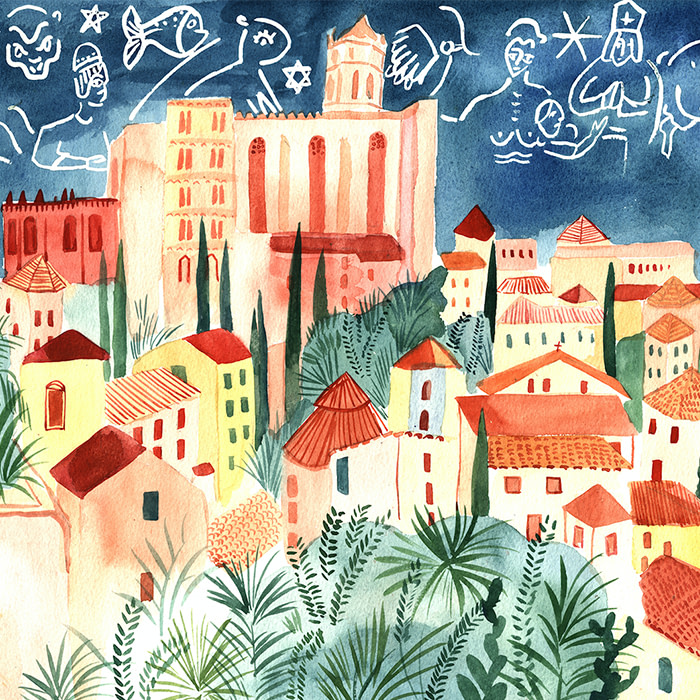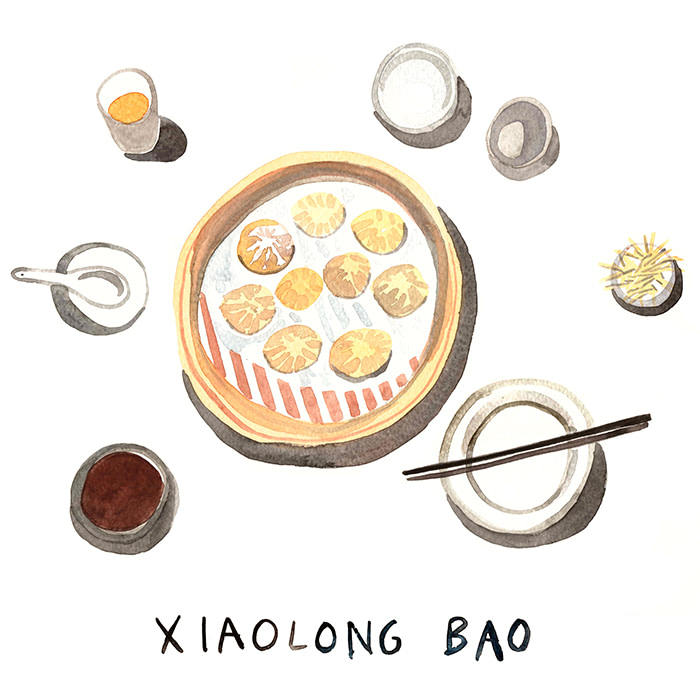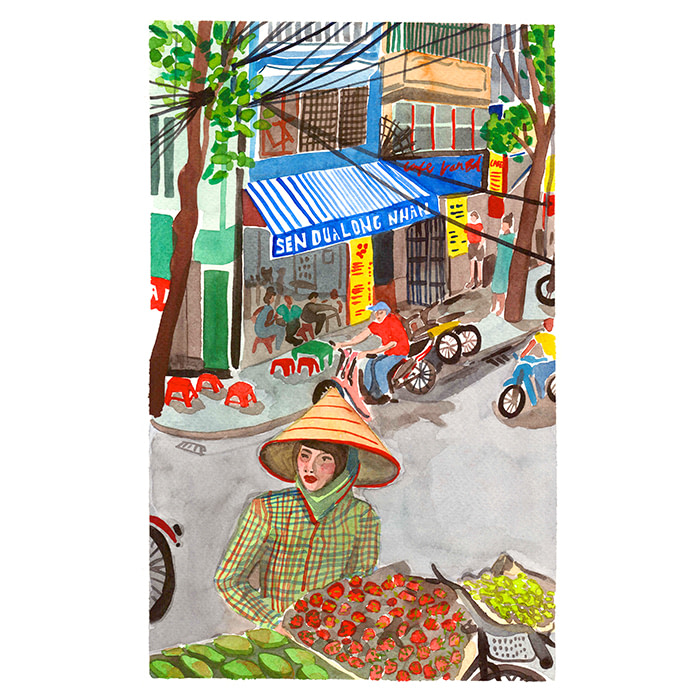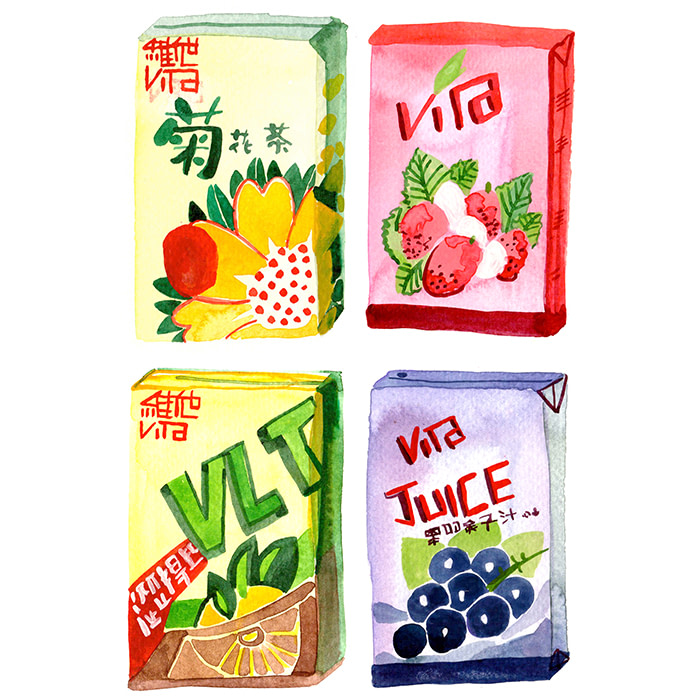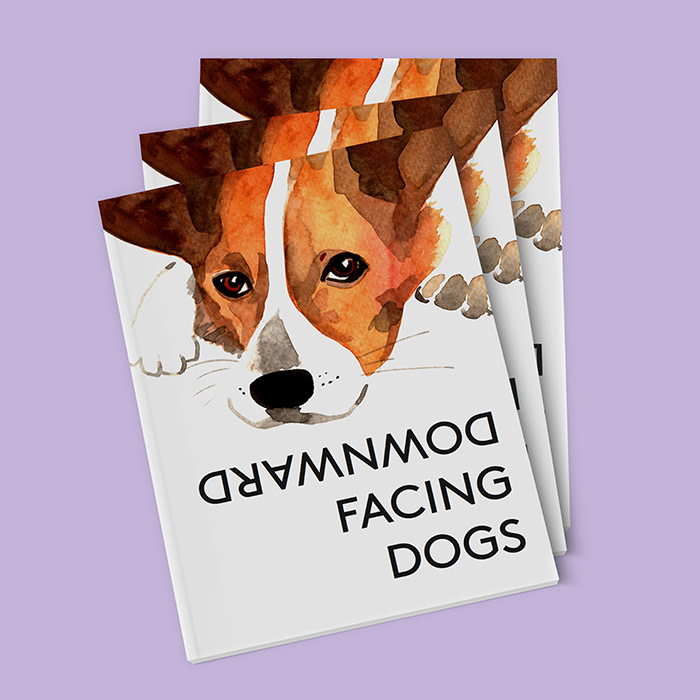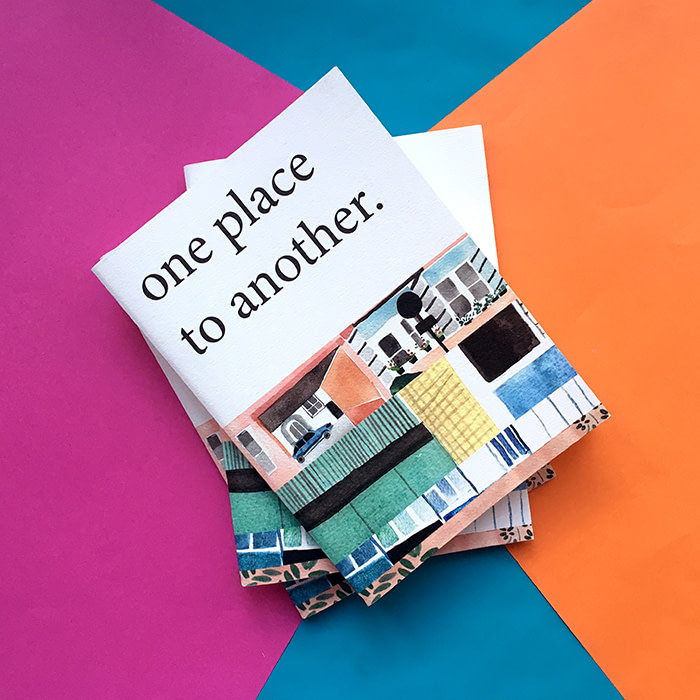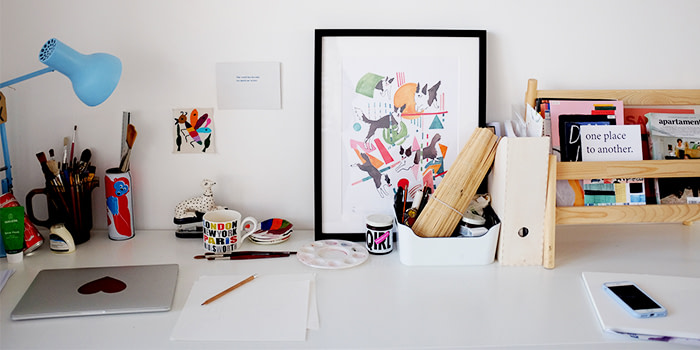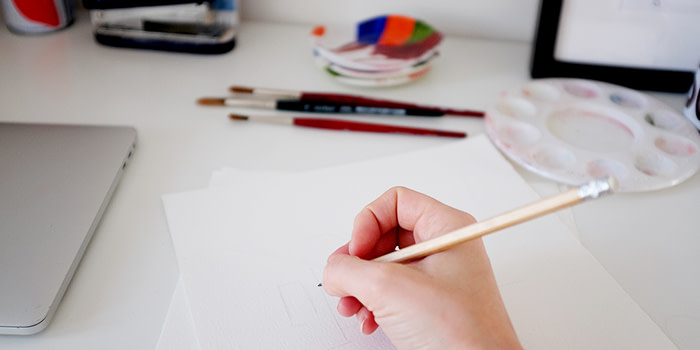Katie Rose Johnston: a modern approach to watercolor
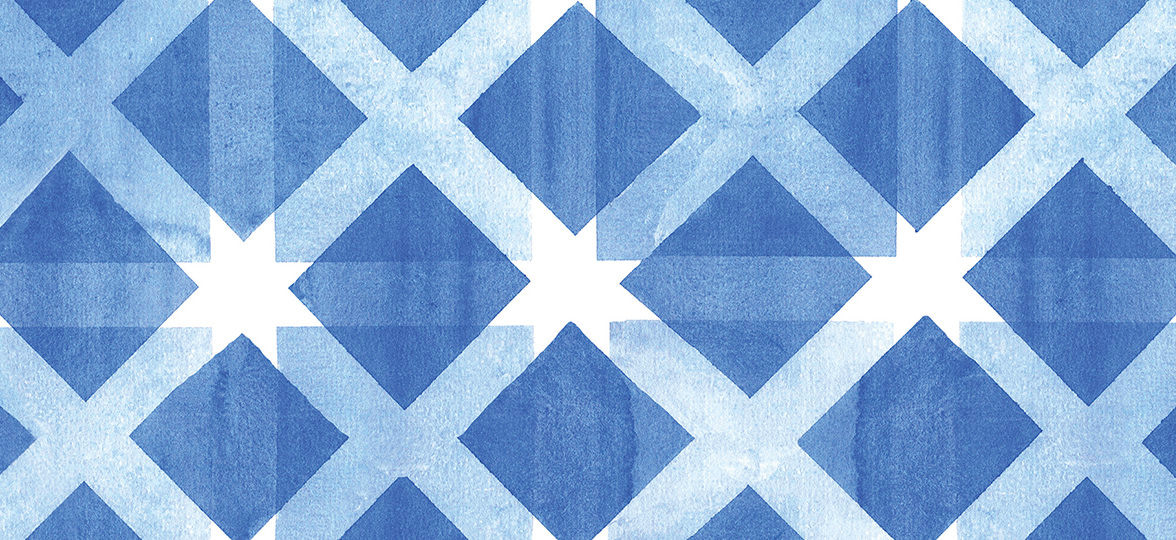
As Friday Night Sketch at the Design Museum continues into 2019, we speak to our third host about her fresh take on a traditional medium.
Based in London, Katie Rose Johnston is an illustrator, designer and watercolor painter. Using traditional media to tackle subjects both classic and modern, her often playful designs are informed by a characteristic sense of humor and a love of bold color.

Watercolor, as Katie admits, “can have a bit of a twee reputation.” But her work, as an illustrator, designer and watercolor painter, is anything but.
“Most mediums come and go, and are in and out of fashion,” Katie says. “But lots of brands use watercolor in conjunction with negative space, which gives it a modern feel.”
Her clients include Sonos, Universal Music and Cocktail Lovers magazine, and Katie has also exhibited in a number of spaces across London, including the Victoria & Albert Museum and the Royal Academy.

Alongside her commissions and collaborations, Katie hosts regular artists’ workshops, and is a member of the illustration collective Day Job Studio, which collaborates on projects from murals and editorial to animations and installations.
We caught up with Katie to uncover her approach to using watercolor in design, and what excited her about hosting the latest instalment of Friday Night Sketch.
How did you start out as an illustrator?
My family’s very creative, and encouraged me to develop my interest in art. Quite early on, I became fascinated with drawing, and my desire to draw and paint has been a constant. I’d still say drawing’s the glue that holds the different elements of my practice together.
I studied illustration at Camberwell College of Art, London, and it was there that I really understood what being an illustrator could mean, and how to challenge it. I also went to the Royal College of Art (RCA) to do a Master’s degree, where I learned how my skills could be valuable in other contexts.
It can be hard to keep your energy up, especially when you get knock backs, but it’s about not taking them personally.
What influences your style of work?
I love to travel – I take hundreds of photos, make sketches, and use these to create illustrations and stories about the places I’ve been. It’s a good way of improving my skills, but also a way to feel rooted in new places.
Day to day, I’m always observing things in my environment. I love patterns in pavements and buildings, and the colors that appear in natural landscapes. I’m also really lucky that a lot of my friends and family are designers, so conversations are a big source of inspiration.
When drawing from life, I work much more spontaneously – it’s like a frenzy on the page. Then, when I’m painting a finished composition, things are more slow and considered.
I think the challenge for me is to try to do this in reverse – to keep some spontaneity in my final compositions, and to have more consideration and not rush when drawing from life.
Tell us about the Day Job Studio collective. How did it come about?
It started when my friends and I left Camberwell in 2012. A group of us who’d worked together on our degree shows had nowhere to put our art stuff, so we decided to share a studio in Peckham.
We used it as a place to keep making work and sharing ideas, and realized that strength in numbers would allow us to work on exhibitions and publications together without breaking the bank. Day Job Studio evolved from there, after we realized collaborating was a great way to get noticed after university.
As we’ve grown into our own different areas, we’re all more focused on our individual careers. It means we have to make a real effort to do something together each year.
It’s so important, though, as you can get sucked into making client work and forget yourself at times. Day Job is our opportunity to keep track of our own selves.
What’s your favorite project to date?
A lot of the things I did with Day Job in our first year were so much fun, and I also worked on a project generating animated show visuals for Peter Gabriel and Sting, which was incredible.
Along with a team from the RCA, we developed a really inspiring little environment in a tiny room packed with things. We tried to keep the work as lo-fi as possible, and I had a great time thinking of creative ways to make hand-drawn, hand-painted images come to life.
I also have a book coming out this August called Paint Play, published by LOM ART. Its about playful approaches to watercolor painting, so I’m looking forward to that!
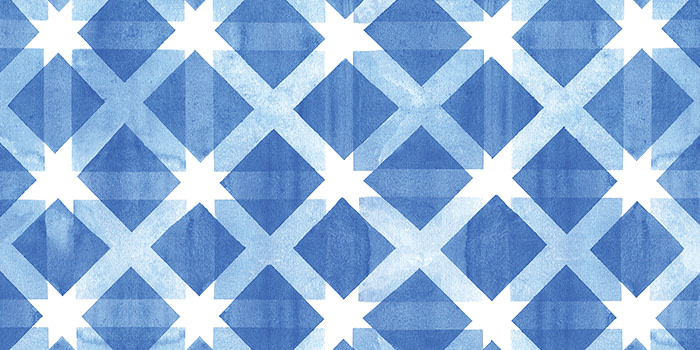
You’ve appeared in an impressive number of exhibitions around the UK. How do you get your work noticed by galleries?
Lots of the exhibitions were joint projects with Day Job. Strength in numbers means we had the confidence to just go for it!
I also went through a phase of just applying for everything, and was lucky enough to get work that way. It can be hard to keep that level of energy up, especially when you get knock backs, but it’s about not taking them personally.
What’s your work space like?
The past year has been a challenge, as I gave up a fixed studio space to travel to Asia. I put together a traveling kit which contained all the essentials for work. Some of the places I set up in were unbelievable – when I was stressing about a deadline sitting next to the Mekong River, I had to pinch myself!
More recently, I’ve moved into a new place in London, with space for a home studio. I’m desperate to have all my creative tools around me again, and to work on some much bigger pieces.
How did you get into teaching?
At Camberwell, I started teaching design part-time at weekends, via an outreach program. Since then, I’ve taught adults and children in schools and galleries.
Now, I run my own workshops and design the content myself, which is something I want to develop a lot more this year. I find the people who come along so inspiring, and always feel like I’m learning from them, too.
What excited you about hosting Friday Night Sketch at The Design Museum?
The theme of the evening, ‘Drawing Calm,’ is something I started exploring at the RCA, and I’ve since run workshops which combine creative learning and meditation.
It’s a personal theme for me, as I’ve struggled with anxiety – and drawing or making something with your hands is a really good way to manage stress.
It was surprising to teach drawing in such a geometric environment, which was reflected in the sketches people produced. Many opted to focus on the shapes and patterns of the space, which was great.
What tips would you give to new designers hoping to grow their design career?
There’s something to be said for quietly working away at your skill sets, and having a sense of modesty about it. It contradicts a lot of the business advice that yells, ‘Get out there!’ but I think it’s important to have a solid foundation before you start shouting about how great you are. The people who are really good let their work speak for itself.
Find out how Tom Maryniak is reinventing wallpaper with woodcut
Keep in touch
Get design inspiration, business tips and special offers straight to your inbox with our MOOsletter, out every two weeks.
